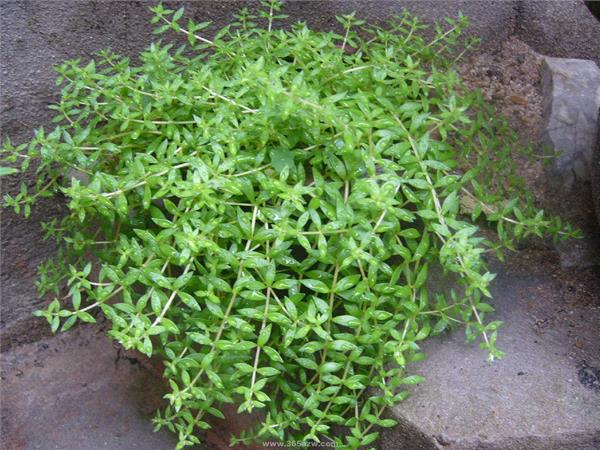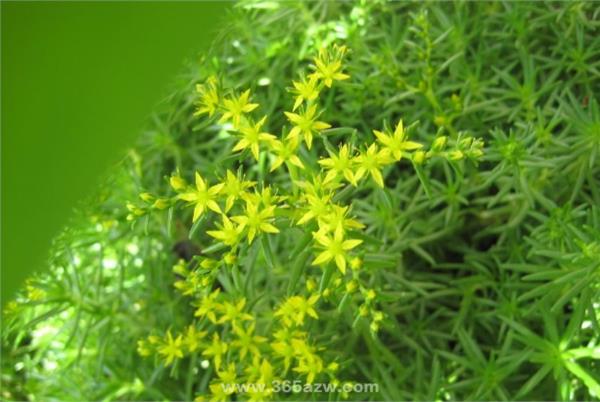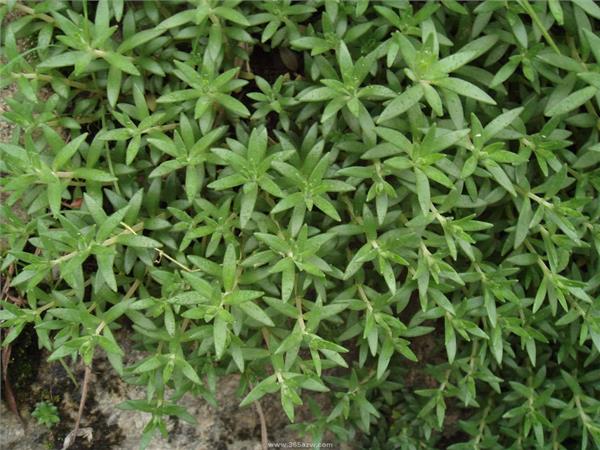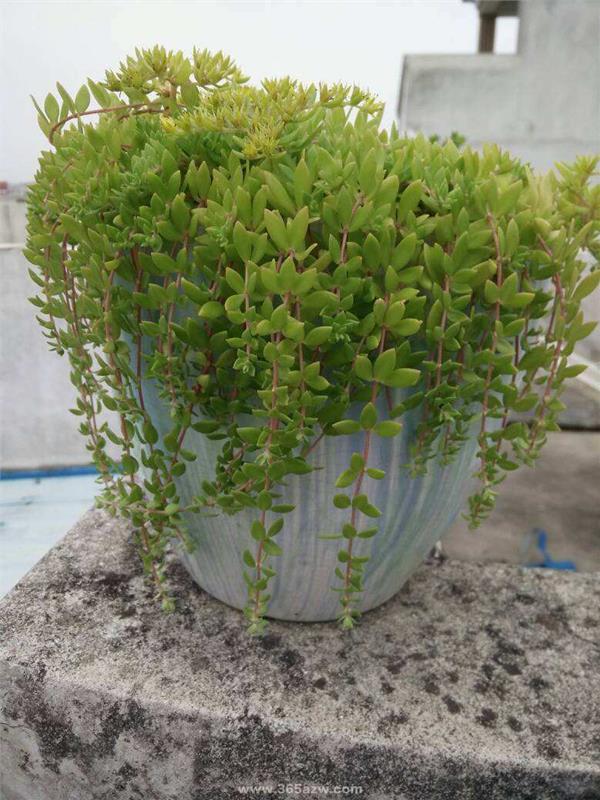What is the difference between Scutellaria angustifolia and Trifolium przewalskii
Sedan grass, also known as perennial grass, Buddha fingernail, half branch, etc., is a perennial herb of Sedum family. Let's take a look at the specific differences between sedum and potted grass.

What is the difference between Scutellaria angustifolia and Trifolium przewalskii
Sagittarian grass
The perennial herb of Sedum crassulaceae is a perennial herb with creeping stems and easy rooting. It generally grows in the rock gap of hillside, the edge of mountain gully and the moist place of riverside. It is very easy to cultivate, and it is not strict to the environment. It can be planted before and after the house, and can also be potted. It is usually propagated by ramets, flowering from May to June and fruiting from July to August.
Potted grass is a common herb widely spread among our folk. Whole herb is used as medicine, which can help us treat many human diseases. Of course, it also has very good effects of health care and health preservation. And it has a very good effect of heat-clearing and detoxification, detumescence, diuresis, purulent muscle and so on, so we often drink some herbal tea in daily life. It is also very helpful to our human health.

Scutellaria angustifolia
Buddha nail grass, also known as perennial grass, Buddha fingernail, half branch, etc., is a perennial herb of the sedum family. The flowering period is from April to May and the fruiting period is from June to July. Phyllostachys pubescens is a succulent plant with high water content, and the cuticular layer of its leaf and stem epidermis has extraordinary characteristics of preventing water evaporation.
It has strong growth adaptability, cold tolerance, drought tolerance, saline tolerance, barren resistance, resistance to diseases and insect pests, succulent stem and flesh, green leaflets like jadeite, neat and beautiful, which can be appreciated not only as a pot plant, but also as an open-air ornamental ground. At present, it is mainly used in roof greening in major cities, and its good drought resistance, cooling and water-saving effect have been proved, showing a good market prospect.
Buddha nail grass has the effect of clearing heat, detumescence and detoxification. Treat sore throat, carbuncle, sores, erysipelas, burns, snake bites, jaundice, dysentery.
The reason why there are flower friends can not tell the difference between weeping pot grass and Buddha nail grass, because both flowers are yellow, the flower pattern is also very similar, the color is bright and brilliant.
Then what can be distinguished is the leaves.
Compared with Scutellaria angustifolia, the leaves are broad and flat. The leaves of the grass are narrow and a little round.
People often take some potted grass in their daily life, of course, most people like to drink potted grass tea, which not only tastes very good, but also is very helpful for our health and health care. and hanging potted grass has a very good effect of heat-clearing and detoxification, detumescence and diuresis, so it is deeply loved by people, and above we also understand the difference between potted grass and Buddha nail grass. Oh, we have to remember.

First, the efficacy of weeping potted grass
Efficacy: clearing heat and detoxification, clearing damp-heat, reducing glutamic pyruvic transaminase.
Indications: clearing damp-heat, detoxification, damp-heat jaundice, diarrhea, diarrhea, sore throat, carbuncle, eczema, scald, insect and snake bite, hemoptysis, hemoptysis. It is often used with turmeric, Artemisia annua and Artemisia annua. It is used for carbuncle swelling, snake bite, hot wound and so on. Can only use fresh products to wash, mash and take juice clothes. And apply locally with juice or dregs.
Second, the function of weeping pot grass:
Potted grass can clear damp-heat and detoxify. Herb is used for damp-heat jaundice, adverse urination, carbuncle, sores and ulcers, acute and chronic hepatitis. Trifolium przewalskii has the effect of reducing glutamic pyruvic transaminase. Tripterygium is used for the activity of acute hepatitis, persistent hepatitis and chronic hepatitis.
1, weeping potted grass for water-fire scald and carbuncle wound ulcer and other symptoms: this product has a good heat-clearing and detoxification effect, for water-fire scald, can be washed with fresh grass pounding juice external application; for carbuncle swelling at the beginning, in addition to decoction soup, while using fresh grass to wash and mash external application, can also reduce carbuncle and detumescence.
2. After being bitten by poisonous snakes, perpendicular herbs are generally used to treat animal bites. After being bitten by poisonous snakes, the wound is disinfected first, and the "eight wind acupoints" or "eight evil acupoints" are needled between the swollen fingers or toes with a three-pronged or thick needle, and the detoxification is taken internally through acupuncture. Then, the fresh potted grass smashed in advance is applied externally around the wound, and the dressing is changed twice a day for several days.
3. Weeping potted grass is used for venomous snakebites: hanging potted grass is good at relieving snake venom and is a common medicine for folk treatment of poisonous snake bites. it can be used only with half a jin of fresh grass, washed with cold boiled water and smashed with strangled juice once or twice a day; it can also be taken internally with Scutellaria barbata, wild chrysanthemum, Bidens bites, plantain, raw rhubarb and other herbs, and washed and mashed with fresh grass for external application.
4. Perpendicular potted grass is used to treat burn wounds, carbuncle swelling, mastitis, mumps, erysipelas, scar furuncle, etc., generally collect fresh grass, wash clean, mash external application, change twice a day, and heal in a few days.
5. Herb is used for infectious hepatitis: in recent years, this product has been used alone in the treatment of infectious hepatitis (including acute icteric hepatitis, acute non-icteric hepatitis, and persistent hepatitis, the active stage of chronic hepatitis). It plays a certain role in reducing serum transaminase, and can reduce or eliminate damp-heat symptoms such as bitterness, poor appetite, yellow red urine and so on. Add an appropriate amount of fresh potted grass into walnut oil and soju, smash and apply.
Weeping pot grass, Scutellaria barbata, raw corrugated, stone swallow each 30 grams, leaking lotus, Coix seed 15 grams each, Angelica sinensis, Salvia miltiorrhiza, safflower each 9 grams, August Zha, Radix Paeoniae Alba, tangerine peel each 6 grams of water fried 3 times, 1 dose a day.

7, anti-inflammatory and detumescent, for inflammatory swelling and pain: cellulitis, 50% ointment with vaseline, local external application.
8. Herba Euphorbiae to treat leukemia. Weeping potted grass, pig calamity each 30 grams, sheep's foot, Hedyotis diffusa, purple grass, raw land, Rhizoma Polygonatum each 15 grams, Angelica, Salvia miltiorrhiza. 9 grams of Radix Paeoniae Rubra and 6 grams of Ligusticum chuanxiong and licorice respectively. It can completely or partially relieve the clinical symptoms. It is suitable for all acute types.
9. Herba Rehmanniae in the treatment of nasopharyngeal carcinoma. Smash some fresh potted grass and apply it externally, once or twice a day. In addition, take rushes and mash them. At the same time: wild Qiaomai, Han Fangji, Achyranthes bidentata each 30 grams are used fresh, fried. Continue to use until the nasopharyngeal tumor disappears and the symptoms are cured in the near future.
10. Herba Scutellariae is used to treat lung cancer. Weeping potted grass, white English each 30 grams, water frying service, 1 dose a day. Persisting in taking it can improve the condition, the clinical symptoms basically disappear, and the focus gradually shrinks.
The active stage of chronic hepatitis has a certain effect on reducing serum aminotransferase, and can reduce or eliminate damp-heat symptoms such as bitter taste, bad appetite and yellow red urine. Add an appropriate amount of fresh potted grass into walnut oil and soju, smash and apply.
6. Herba Scutellariae is used to treat liver cancer. Weeping pot grass, Scutellaria barbata, raw corrugated, stone swallow each 30 grams, leaking lotus, Coix seed 15 grams each, Angelica sinensis, Salvia miltiorrhiza, safflower each 9 grams, August Zha, Radix Paeoniae Alba, tangerine peel each 6 grams of water fried 3 times, 1 dose a day. It can eliminate the symptoms and reduce the liver swelling.

7, anti-inflammatory and detumescent, for inflammatory swelling and pain: cellulitis, 50% ointment with vaseline, local external application.
8. Herba Euphorbiae to treat leukemia. Weeping potted grass, pig calamity each 30 grams, sheep's foot, Hedyotis diffusa, purple grass, raw land, Rhizoma Polygonatum each 15 grams, Angelica, Salvia miltiorrhiza. 9 grams of Radix Paeoniae Rubra and 6 grams of Ligusticum chuanxiong and licorice respectively. It can completely or partially relieve the clinical symptoms. It is suitable for all acute types.
9. Herba Rehmanniae in the treatment of nasopharyngeal carcinoma. Smash some fresh potted grass and apply it externally, once or twice a day. In addition, take rushes and mash them. At the same time: wild Qiaomai, Han Fangji, Achyranthes bidentata each 30 grams are used fresh, fried. Continue to use until the nasopharyngeal tumor disappears and the symptoms are cured in the near future.
10. Herba Scutellariae is used to treat lung cancer. Weeping potted grass, white English each 30 grams, water frying service, 1 dose a day. Persisting in taking it can improve the condition, the clinical symptoms basically disappear, and the focus gradually shrinks.
- Prev

Introduction to the ecological habits and distribution of jade fan
Introduction to the ecological habits and distribution of jade fan
- Next

What is the neoclassical decoration style? the characteristics of neoclassical decoration style
What is the neoclassical decoration style? the characteristics of neoclassical decoration style
Related
- Wuhan Hospital Iron Tree Blooming Result Was Instantly Frightened by the Gardener Master
- Which variety of camellia is the most fragrant and best? Which one do you like best?
- What is the small blue coat, the breeding methods and matters needing attention of the succulent plant
- Dormancy time and maintenance management of succulent plants during dormancy
- Minas succulent how to raise, Minas succulent plant pictures
- What are the varieties of winter succulent plants
- How to raise succulent plants in twelve rolls? let's take a look at some experience of breeding twelve rolls.
- Attention should be paid to water control for succulent plants during dormant period (winter and summer)
- Watering experience of twelve rolls of succulent plants
- Techniques for fertilizing succulent plants. An article will let you know how to fertilize succulent plants.

